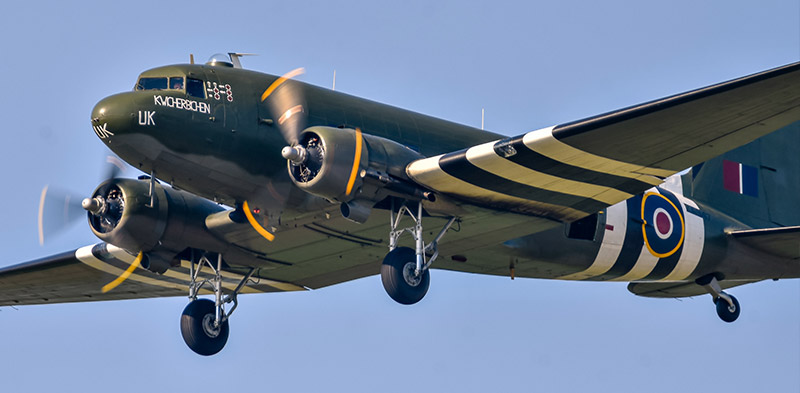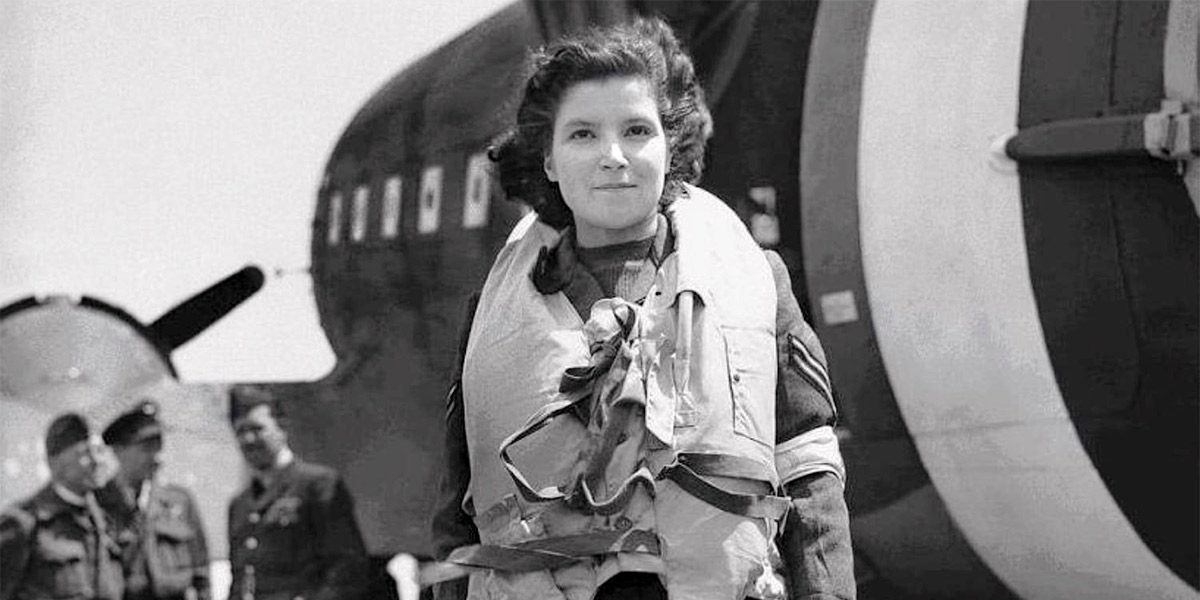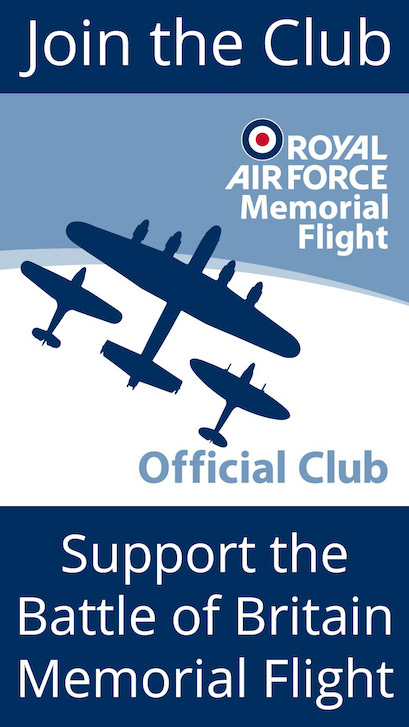D-Day+7 ‘Flying Nightingale’ Lydia Alford
Header: WAAF nursing orderly Cpl Lydia Alford was the first British servicewoman to land in Normandy after D-Day.
Seventy-five years ago, on 13th June 1944, D-Day+7, 27-year-old WAAF Corporal Lydia Alford was the first British servicewoman to land in Normandy. She was also the first British servicewoman ever to be sent deliberately into a war zone by the British Government, something that is normal and commonplace today, but which in 1944 was an exceptional precedent.
Lydia was a nursing orderly with 233 Squadron which flew Dakotas out of Blakehill Farm, an airfield in the Cotswolds about halfway between Swindon and Cirencester. 233 Squadron was involved in the D-Day airborne forces operations and was now expected to turn its hand to casualty evacuation sorties. Lydia had trained as a nurse before joining the WAAF. Shortly afterwards she volunteered for air ambulance duties and was sent for specialist training at Hendon. The training included instruction in the use of oxygen, giving injections, dealing with various types of injuries including missing limbs, head injuries, burns and colostomies, and the effects of air travel at altitude. On completion of the course she was posted to Blakehill Farm. Her training continued with ‘brush-up’ courses at the nearby RAF hospital at Wroughton as well as with flying-related exercises such as dinghy drill and flying experience in the 233 Squadron Dakotas.
On 13th June 1944, three Dakotas of 233 Squadron, carrying war supplies on the outbound trip, landed on a newly built airstrip in Normandy, B2 Bazenville, escorted by a squadron of Spitfires, to conduct the first casualty evacuation by air of men injured in the fighting in Normandy. Each of the three Dakotas had a WAAF nursing orderly on board and Lydia’s aircraft was the first to land on what had, until recently, been enemy soil. After landing and whilst the military supplies were being unloaded from the Dakotas, Lydia tried to make the wounded men as comfortable as possible as they waited patiently for their flight back to England and to hospital. She later recalled: “Chiefly I remember the dust which was everywhere, coming up in great clouds. I had water and panniers of tea to give to those who could drink. A little stray dog came up and started to play with the wounded. It cheered them up no end.” Each Dakota was then loaded with 14 stretcher cases and six walking wounded for the return flight, during which the nurses tended them.
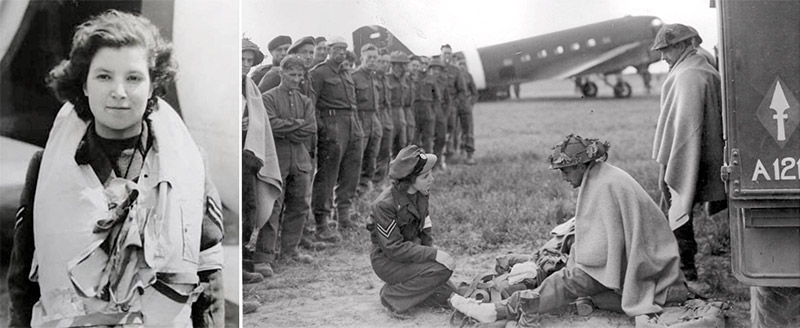
When the three Dakotas landed back at Blakehill Farm and the casualties had been unloaded for transportation to the nearby military hospitals, Lydia and the other two WAAF nursing orderlies on this first ‘casevac’ operation, Myra Roberts and Edna Birkbeck, were surrounded by press correspondents representing many British, Canadian and American newspapers. Their reports dubbed the women ‘Flying Nightingales’, a name that was to stick with the WAAF air ambulance nurses from then on. For Lydia’s family, seeing the photographs of her and reading the stories about her in the newspaper was the first they knew of her demanding role.
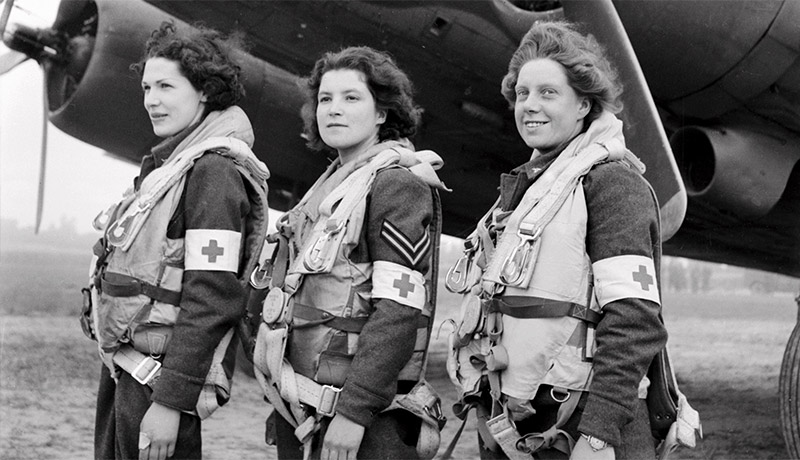
The success of this first operation on 13th June opened the way for further mass evacuation of wounded soldiers from France by air. Five days later, 11 Dakotas returned 183 casualties from B4 Beny-sur-Mer airfield to Down Ampney in Gloucestershire; to be followed by another 90 casualties three days after that. By the end of June 1944, 1,092 stretcher cases and 467 sitting wounded had been evacuated by the Dakotas of 233, 271 and 48 Squadrons and their ‘Flying Nightingales’.
The work of Lydia and the other ‘Flying Nightingales’ continued for the rest of the war, taking them further and further into Europe. Lydia flew into the Arnhem area in September 1944 to evacuate casualties, with ground battles still going on nearby. After the war Lydia Alford returned to nursing at a South Hampshire hospital, but in her later life she increasingly suffered from ill health and spent many years in care. She died in 1993.
The BBMF C-47 Dakota ZA947 is currently painted in the colours of one of the 233 Squadron aircraft that flew on casualty evacuation operations with the ‘Flying Nightingales’, helping to ensure that their courage and fortitude is not forgotten.
